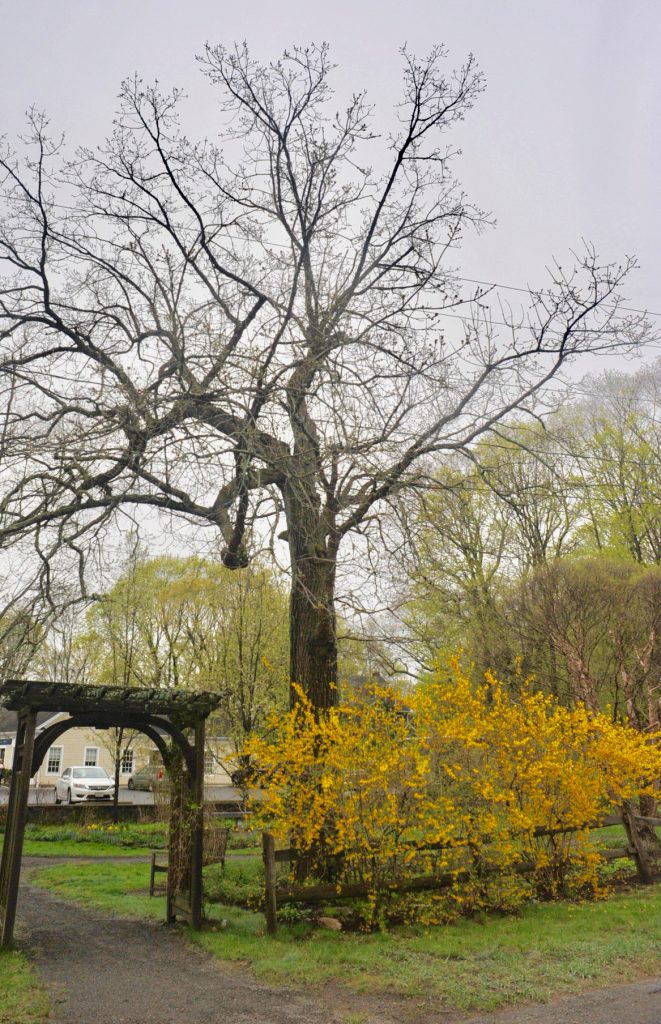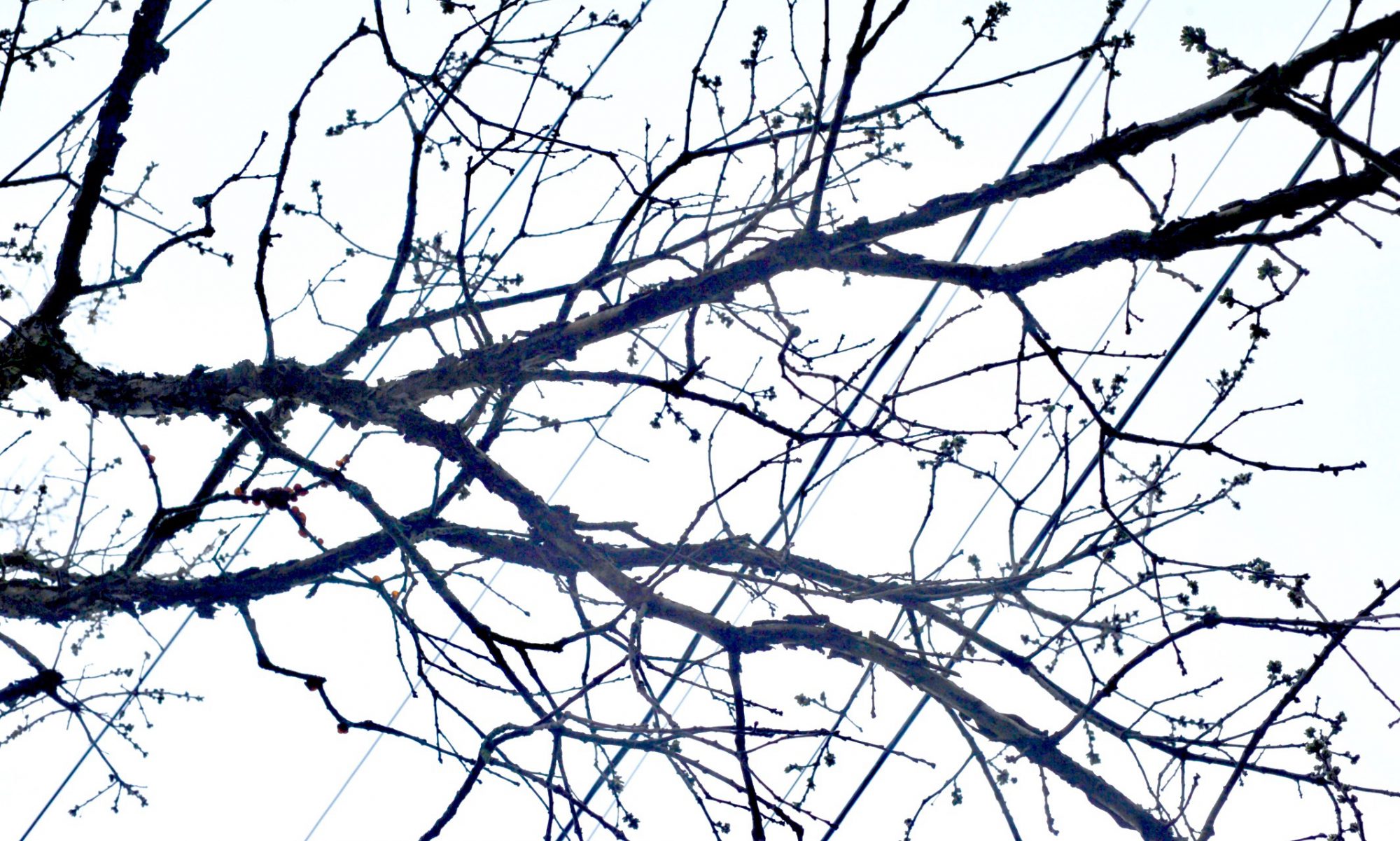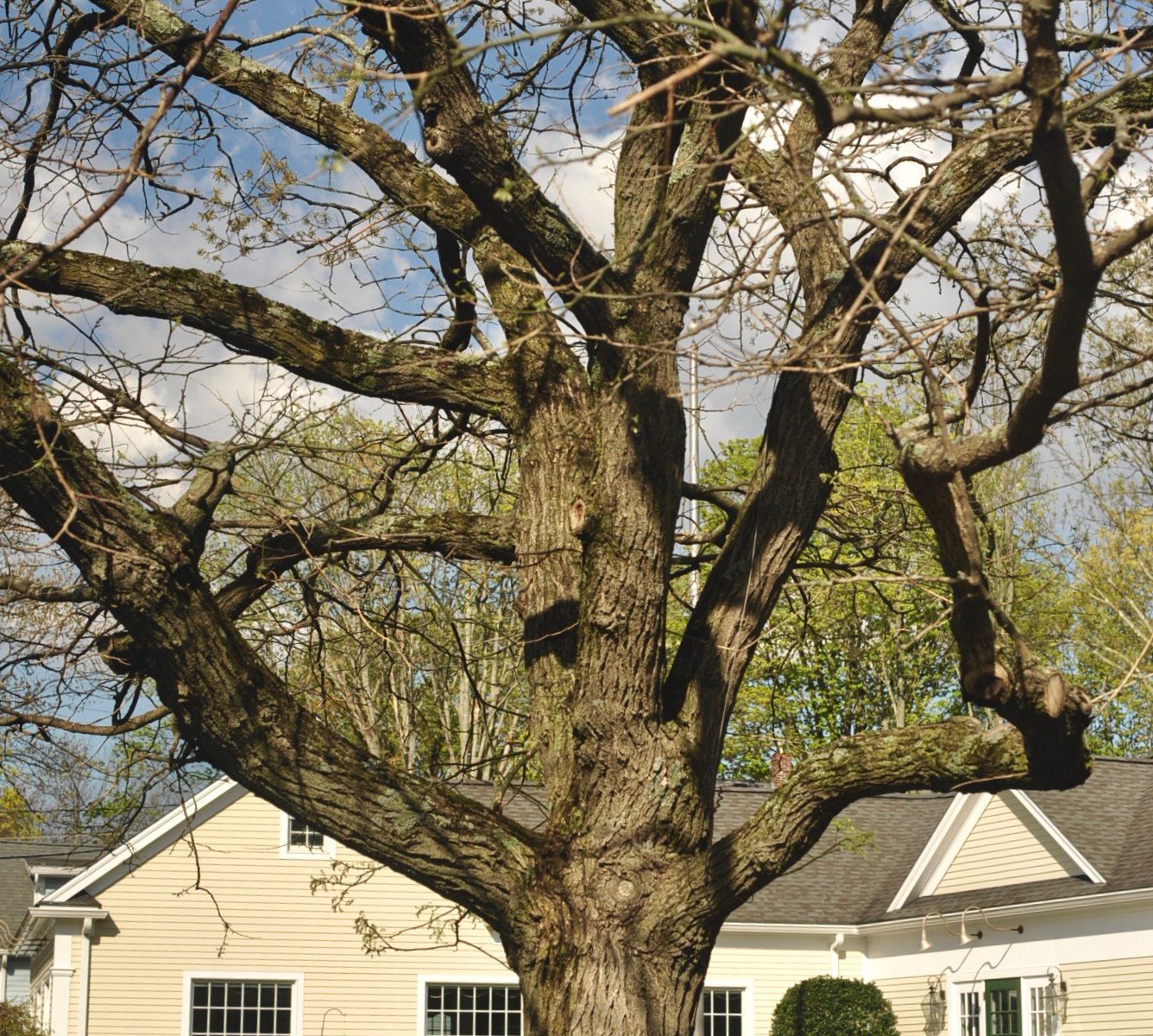[easy_panorama id=”330″]
The Japanese Pagoda, or Chinese Scholar tree, is native to China. But it became very popular in Japan, where it was planted on the grounds of many Buddhist temples. Today it is also a well-loved ornamental tree in Europe, North America and South Africa, probably because of its beautiful leaves that resemble a fern, and its elegant round crown. The Pagoda tree at Station Park, though, leans toward the street. It seems to have been pruned to allow walkers to pass through the park path and the sidewalk, and it may be growing faster toward areas where it reaches more light. The large Oak across the gravel path is partially blocking its access to the sun. This Pagoda is quite old, very possibly planted when the sidewalks in Lincoln were being laid out. You can see that the grade has been considerably lifted since it was planted, as the trunk goes into the ground with no flare.
The Pagoda is one of the 50 fundamental herbs used in traditional Chinese medicine, and it is easy to see why. The list of its medicinal uses seems endless: it fights bacteria and inflammation, suppresses muscle spasms and bleeding, reduces fever and blood pressure, and fights cholesterol among many other uses. Modern medicine is still unveiling its benefits. A recent study suggests that an extract from the seeds may alleviate rheumatoid arthritis symptoms.

Have you heard of the “guilty Pagoda tree” or zuihuai? It is a tree located in Jingshan Park, in Beijing, China, that became a tourist attraction and national landmark. The Chongzhen Emperor, the last ruler of the Ming dynasty, allegedly hanged himself from the tree in 1644, after the imperial city of Beijing fell to rebel forces.
VISIT THE SWAMP WHITE OAK NEXT


